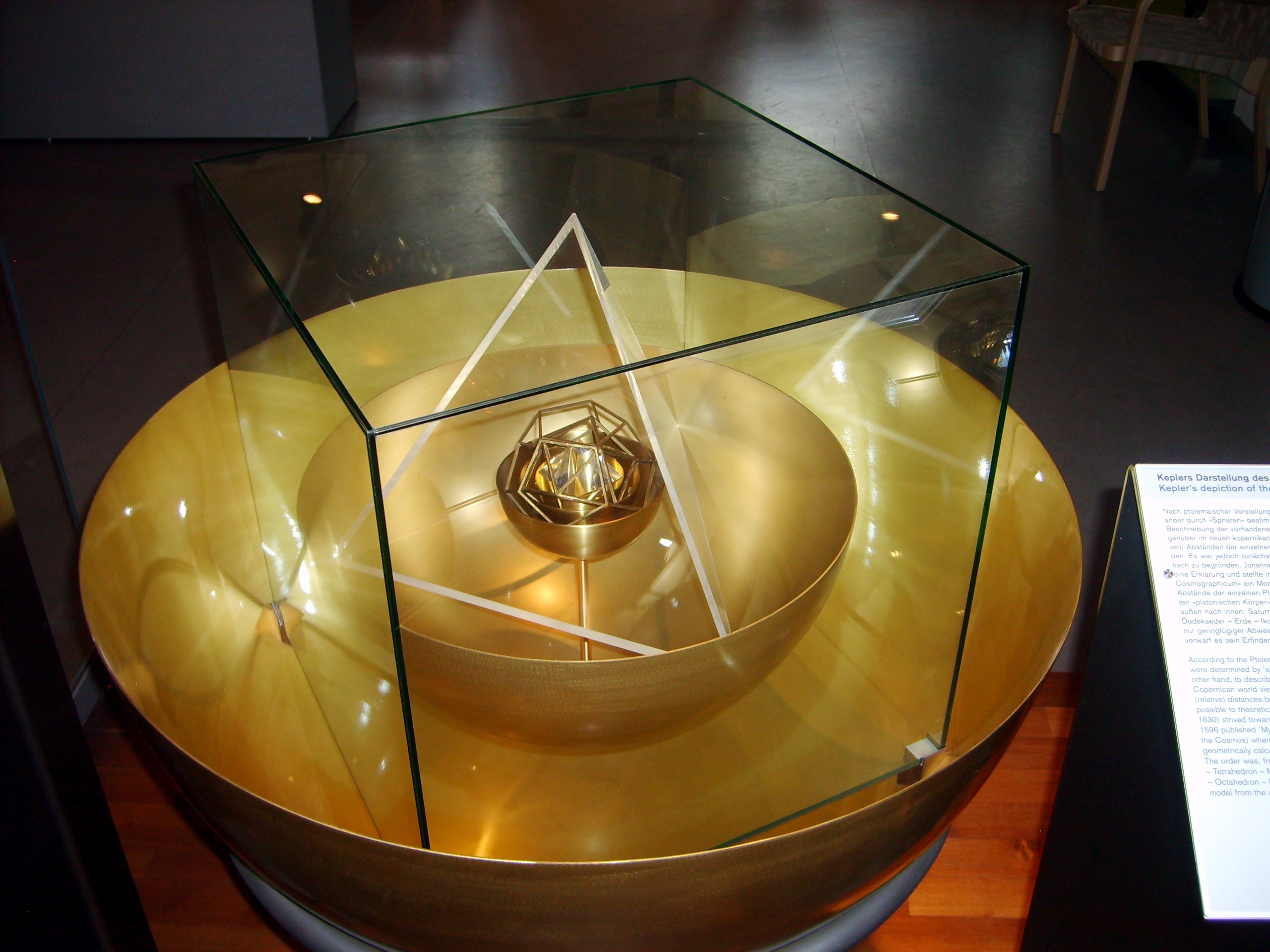
 Mysterium Cosmographicum (The Secret of the Universe) by Johannes Kepler
Mysterium Cosmographicum (The Secret of the Universe) by Johannes Kepler
Famous 17th Century astronomer Johannes Kepler brought us the idea of the ellipse. But how did he come to this conclusion?
Kepler’s research contained within Mysterium Cosmographicum explains how he once viewed the solar system in a much different way before he accidentally discovered the ellipse. Before this great astronomer defined Kepler’s laws of planetary motion, he used Nicolaus Copernicus’ heliocentric model to construct a solar system model of his own. In Kepler’s solar system model, he uses perfect circles to outline the orbits of solar system objects, and places significance upon the distance of space in between each object’s location.
Johannes Kepler draws a solar system model around an idea of divine proportion within Mysterium Cosmographicum. Kepler’s theory is based on the idea that the number seven was divine and that the orbital distances between each planet reflected a proportion of the Platonic solids.
Kepler describes that there are seven celestial bodies in the solar system—the Sun, Mercury, Venus, Earth, Mars, Jupiter and Saturn. With this, he took the Platonic solids and used them to map each planet’s distance with a shape of divine proportion constructed from the number phi or what is also known as the golden ratio. Kepler sought to prove that the solar system was constructed of planets in circular orbits around the sun, each separated by a shape of divine proportion outlined in the Platonic solids that defines its orbital distance.

When correctly ordered, these solids helped predict the distancing of the planets in the order—octahedron, icosahedron, dodecahedron, tetrahedron, cube.
In the end, Kepler’s Mysterium Cosmographicum proved an incomplete idea of the solar system, due to the fact that it lacked the orbits of Uranus and Neptune. The first of these non-visible outer planets would not even be discovered for another century. Not to mention, his calculations relied on inaccurate figures that dated back to the days of the ancient Greek astronomers.
Kepler’s discovery would end in the establishment of his own legacy, as he revealed the true nature of planetary motion.

The planets’ orbits were not perfect circles but ellipses. With closer observation, what he set out to prove is what he ultimately revealed. Kepler defined the three laws of planetary motion that outline the elliptical orbital motion of the planets in the solar system.
So what are Kepler’s Laws of Planetary Motion?
- Law of Ellipses: The orbit of a planet is an ellipse in relation to the Sun at the center point of one focus.
- Law of Equal Areas: The planet in motion is quickest at perihelion and slowest at aphelion.
- Law of Harmonies: The speed of a planet’s orbit is proportionate to its distance from the focus.
Despite the fact that he set out to redefine the solar system with a mode of divine proportion in mind, Kepler’s genius can be found in his later shift to the laws of planetary motion when he proposed the model of the ellipse.
⚕Home⚕
cc: Sam Wise, Pierre Lecourt, H. Raab



